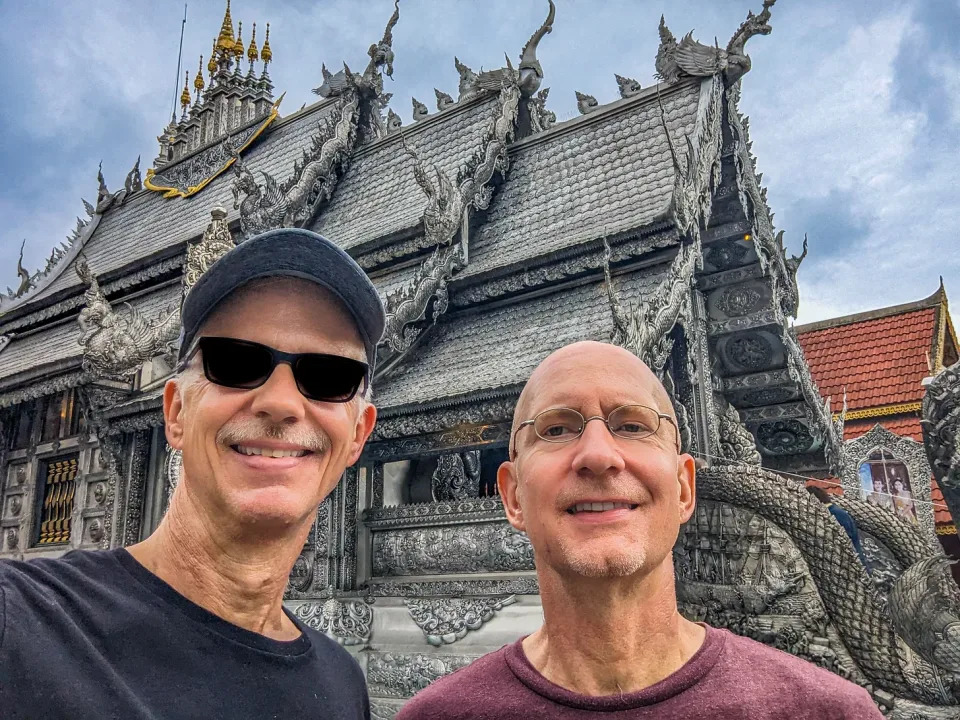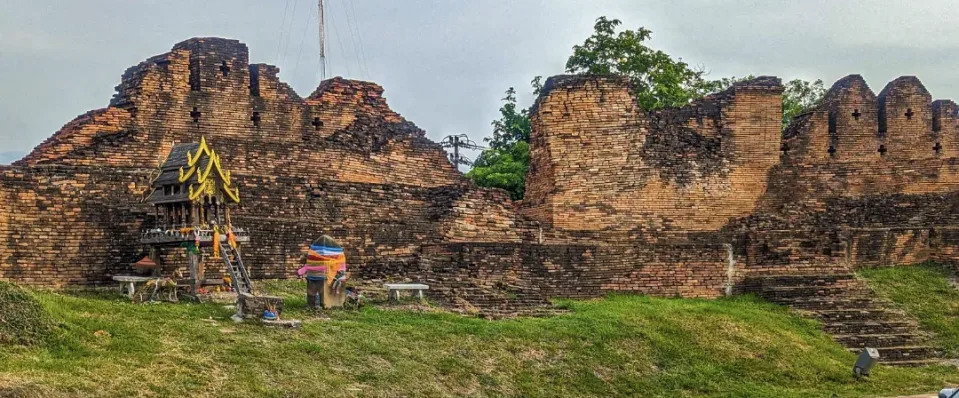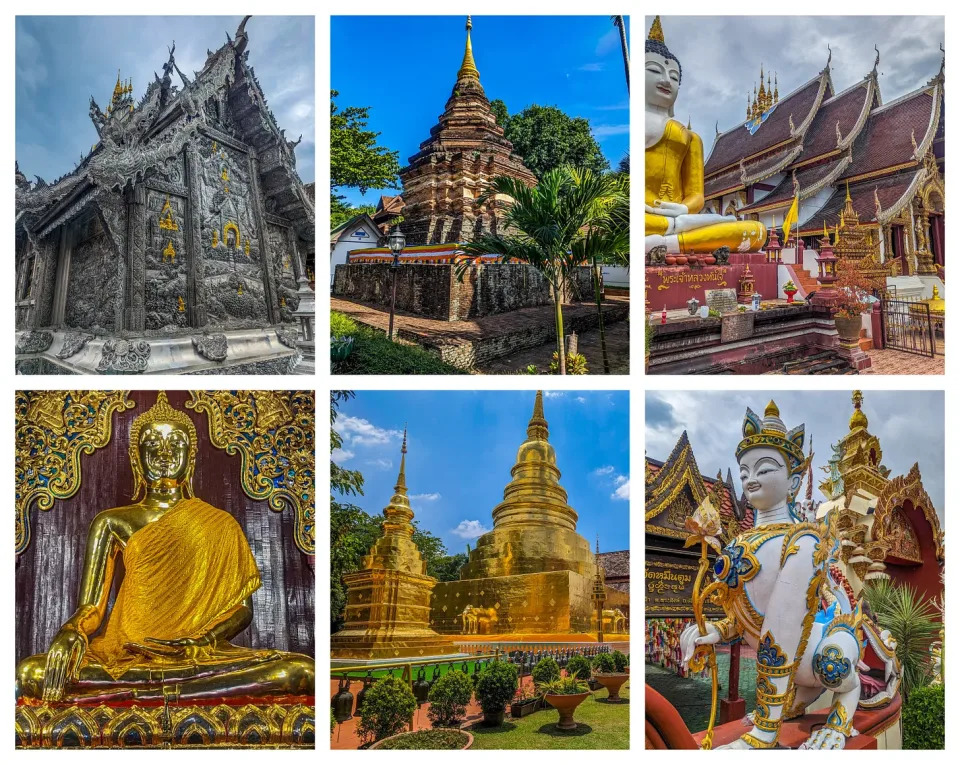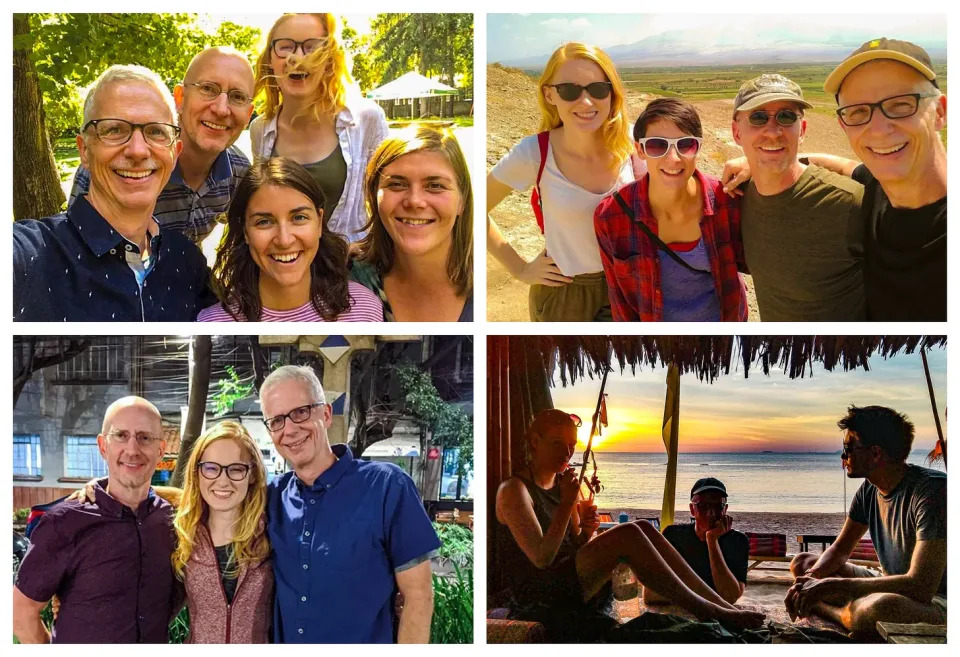We didn’t want to come to Chiang Mai because of all of the digital nomads. We were idiots.
6 min readAnyone who follows the phenomenon of nomading knows that there are certain “hotspots” around the world that are incredibly popular with nomads and long-term travelers: Mexico City, Mexico; Lisbon, Portugal; Medellín, Colombia; Bali, Indonesia; Bansko, Bulgaria; and Tbilisi, Georgia.
But the One Ring to Rule Them All? Chiang Mai, Thailand, which is probably the world’s most well-known nomad destination.
Which is exactly why Michael and I never wanted to come here. All those nomads? We didn’t leave America to travel the world just to hang out with people exactly like ourselves. And didn’t the whole city exist just to cater to these people? That didn’t seem like a very authentic “Thai” experience.


The thing is, we finally came to Chiang Mai, and we absolutely love it.
ADVERTISEMENT
Advertisement
Chiang Mai, a city in northern Thailand, is a strange beast. It’s larger than we thought — more than a million people in the greater area.
But it has a very small town feel, especially in the central “Old City” area, which is almost entirely surrounded by an ancient moat and, often, the remnants of crumbling city walls.


And boy, this city really is full of tourists, expats, and, yup, nomads.
Shorter-term travelers often stay in the Old City area — and since it’s low season, we opted to stay here too.
Longer-term expats and nomads tend to live in the Nimman neighborhood. Meanwhile, expats and immigrants from other parts of the world have their own neighborhoods.
Indeed, prior to Covid, this city was experiencing a serious “overtourism” problem. The place really was overrun with foreigners, and the locals were exhausted. Meanwhile, many tourists and most nomads come from countries wealthier than Thailand, and that income disparity can make visitors act entitled. Some locals were understandably resentful.


That said, tourism has also made Chiang Mai very prosperous, the envy of surrounding Thai towns. And Covid reset the whole tourism industry, taming the unpleasant crowds, at least for the time being.
ADVERTISEMENT
Advertisement
As a result, the city is now both charming and manageable — a relief for me after the fantastic but overwhelming chaos of Bangkok.
Chiang Mai is flat and walkable — although, like much of Asia, the sidewalks usually leave something to be desired.
The Old City area is mostly boutique hotels and guest houses, charming cafes and coffee shops, markets and bazaars — and, of course, restaurants. There is Thai cuisine, yes, but there’s also every imaginable other cuisine. There are four Mexican restaurants within a short walk from our hotel.
And they don’t suck!
Seriously, in most countries — unlike in America — it can be very hard to find good, non-local cuisine, at least outside of the big cities.


Oh, and Thai food in northern Thailand tends to be far less spicy than in southern Thailand. I’m on record as loving the complexity of Thai cuisine, but — and I’m a bit embarrassed to admit this — back in Bangkok and even down south in the islands, there was usually at least one dish in almost every meal that set my mouth aflame.
ADVERTISEMENT
Advertisement
Chiang Mai also has a zillion interesting things to do in the mountains and jungles that surround the city, along with plenty of stunning natural beauty.
But be forewarned: most visitors to Europe eventually discover something called Cathedral Fatigue; the Thailand corollary is Temple Fatigue. In all of Thailand, there seems to be a 7-Eleven on every block — and also at least one temple.


For Westerners like Michael and me, this area of the world is also shockingly affordable. Last week, I said that to my brother, and he said, “What does ‘affordable’ mean exactly? A hundred dollars a night (USD) for a decent hotel?”
I said, “Uh, you could get a fairly decent hotel here for a hundred dollars a week.” It’s the low season, but we’re paying $230 a week for a very nice hotel that includes a fitness room, a lovely pool area, and a wonderful breakfast buffet.
ADVERTISEMENT
Advertisement
For longer stays, it’s easy to get an apartment for well under a thousand dollars a month — less than five hundred dollars a month for a yearly lease. One wealthy friend claims he has “the most expensive apartment in Chiang Mai” — a penthouse with several floors, multiple balconies and bedrooms, and two different hot tubs. It’s $2800 a month.
For meals, you can easily eat out for a couple of bucks, but ten to fifteen dollars per person will get you a lavish, multi-course feast.
In short, for most nomads, including Michael and me, life is extremely easy here.
Tell me again why I thought coming here would be such a bad thing? Something about not wanting to spend time around other nomads?
It’s true, Michael and I have absolutely loved exploring foreign cultures — and Chiang Mai is definitely a place that caters to our culture both as nomads and as Westerners. Back in Bangkok, a Thai friend of ours referred to this city as “the expat town.”
ADVERTISEMENT
Advertisement
There is more to Chiang Mai than just tourism. There are plenty of Thai people living here too, including many families with children.
But the fact is, much of the city does cater to tourists and nomads.
Then again, why is that so terrible?
Being here, I’m reminded of all the times Michael and I have already spent in other nomad hotspots: Bansko, Bulgaria; Mexico City; Koh Lanta, Thailand; and Tbilisi, Georgia. We lived in all four of these places for three months each, and while we made friends with locals, we also made incredible nomad friends.
In fact, in Mexico City, Koh Lanta, and Tbilisi, we had specifically made a point to rendezvous with friends we had first made in Bansko.


It’s hard to explain life in one of these nomad hubs. Michael and I call it “the Nomad Bubble,” and it feels a lot like my first few months when I went off to college. Life has an “out of place and time” feel — like you’re disconnected from the outside world. Meanwhile, everyone around you has been uprooted from their previous social circles, so they’re incredibly open to new relationships.
ADVERTISEMENT
Advertisement
It helps that in all of these nomad hotspots, the cost of living is low, so even a “poor” Westerner can afford to eat out almost every night, and regularly go to the latest club or wine bar, and stop by the local hot spring at least once a week.
Recently, I wrote about how, as a nomad, I’ve loved so many different cities and countries, and an online friend commented, “That’s because you never get beyond the honeymoon stage. You never learn what those place are really like.”
On one hand, I took minor offense. I think people would be surprised by how often Michael and I mix with and befriend locals, and how we sometimes do go fairly deep into the local culture.
On the other hand, she has a point. In three months, you can’t ever go that deep.
Then again, what’s wrong with a bunch of different honeymoons — at least if no one is being hurt? The whole point of the “honeymoon period” is that it’s awesome, right?
ADVERTISEMENT
Advertisement
I also think it’s okay that nomads, like all people, sometimes enjoy ourselves — assuming, of course, that we stay mindful of our privilege and our impact, and do our part to try to make the world a more equitable place.
But it’s also ironic for me to say all this, because for a long time, I was really judgmental about Chiang Mai and the nomads who come here. I see now it was pure prejudice on my part.
Sometimes you really need to get over yourself.
Anyway, this place is awesome. I wish Michael and I had come earlier, and one day, we’ll almost certainly be back.


